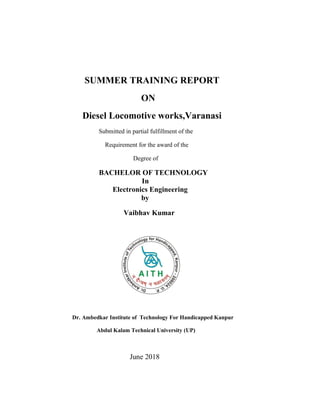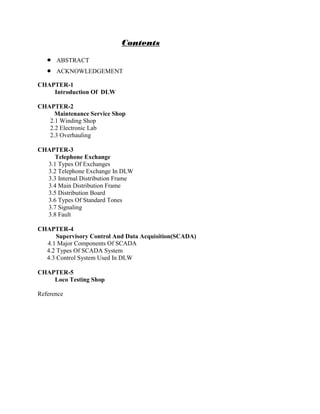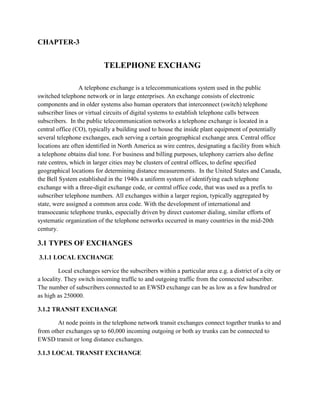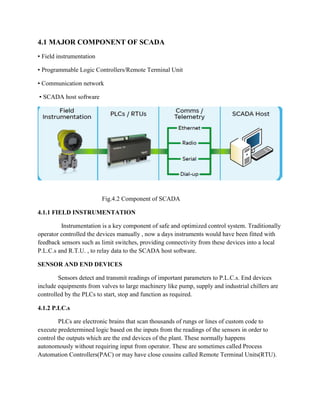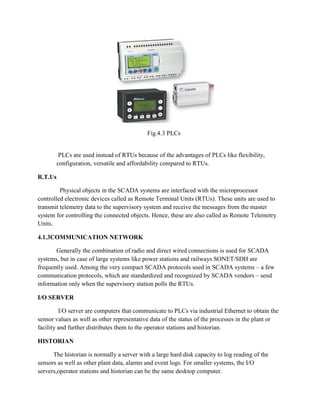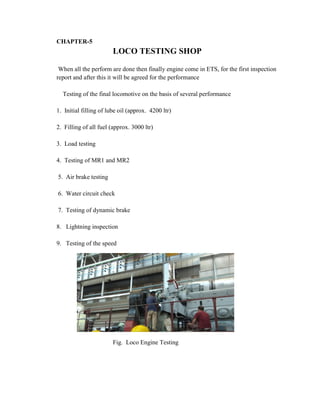This document is a summer training report submitted by Vaibhav Kumar for his Bachelor of Technology degree in Electronics Engineering from Dr. Ambedkar Institute of Technology For Handicapped Kanpur. The report details Kumar's training at the Diesel Locomotive Works in Varanasi, India. The report contains chapters on the telephone exchange, maintenance service shop, supervisory control and data acquisition system, and loco testing shop at DLW. It provides an overview of the functions and components of these different areas at the locomotive works based on Kumar's practical experience during his training.
